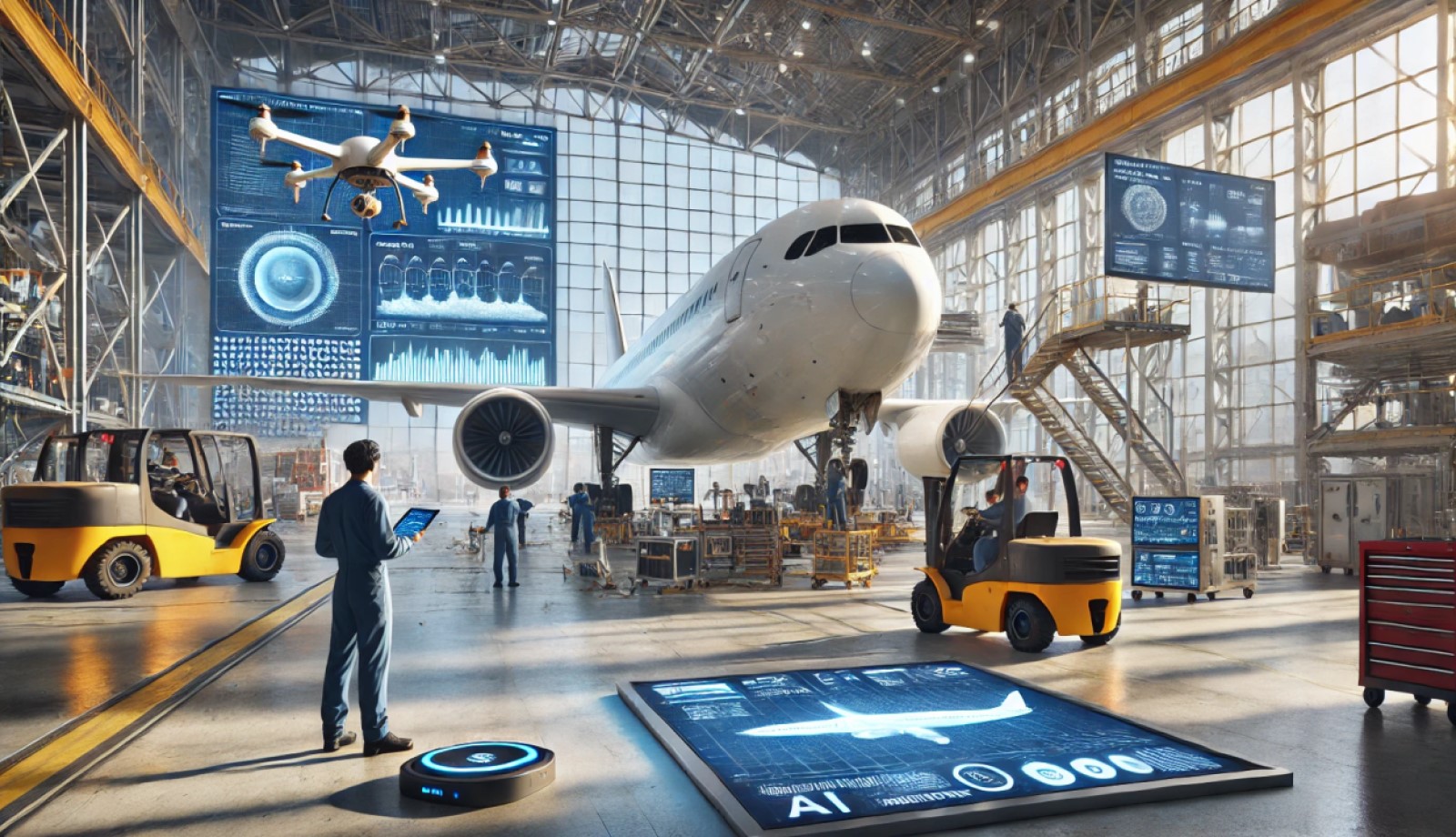AI in MES/MRO
Leveraging AI to Optimize Manufacturing Execution and Maintenance Processes.
Leveraging AI to Optimize Manufacturing Execution and Maintenance Processes
AI in the context of MES (Manufacturing Execution Systems) and MRO (Maintenance, Repair, and Overhaul) can bring significant improvements to operational efficiency, decision-making, and predictive capabilities. Below is a breakdown of how AI can enhance both MES and MRO
1. AI in Manufacturing Execution Systems (MES)
MES serves as a bridge between enterprise-level systems (like ERP) and the shop floor, managing real-time operations, scheduling, quality control, and more. AI can optimize these processes in various ways:
a. Real-Time Monitoring & Decision Support
Predictive analytics can help predict failures or performance degradation, providing real-time insights to prevent production downtime.
AI models can analyze sensor data from machines to detect anomalies or inefficiencies in the manufacturing process.
b. Optimized Scheduling
AI can improve production scheduling by considering factors such as machine availability, workforce skills, maintenance schedules, and resource constraints to create more efficient plans.
AI can adjust schedules dynamically based on real-time changes, like machine failures or material shortages.
c. Quality Control and Defect Detection
Computer vision powered by AI can be used to inspect products for defects during production, reducing reliance on manual inspection and improving quality control.
AI algorithms can learn from historical production data to identify patterns leading to defects, allowing for early intervention.
d. Energy Management
AI can analyze energy consumption patterns and recommend adjustments to minimize waste and reduce costs, helping manufacturers meet sustainability goals.
e. Production Traceability
AI can enhance traceability of parts and processes in the manufacturing chain, making it easier to track and record every step of production for compliance and quality assurance purposes.
2. AI in Maintenance, Repair, and Overhaul (MRO)
MRO focuses on maintaining, repairing, and overhauling equipment to ensure continuous operations. AI can play a key role in optimizing MRO processes:a. Predictive Maintenance
AI models can predict when a machine or component is likely to fail based on sensor data (temperature, vibration, pressure, etc.). By using machine learning algorithms to analyze historical data, AI can predict failure points and recommend maintenance before failure occurs, reducing unexpected downtime.
Condition-based monitoring can allow for more targeted interventions, where AI determines the optimal time for maintenance or replacement based on equipment performance trends.
b. Parts and Inventory Management
AI can help optimize inventory management by predicting the need for specific parts, streamlining the ordering process, and preventing overstocking or understocking of essential components.
AI can analyze usage patterns to forecast part replacements and ensure that necessary spare parts are available when required, avoiding production delays.
c. Automated Diagnostics
AI-driven systems can automate the process of diagnosing equipment issues by analyzing symptoms, historical maintenance records, and real-time data to suggest potential problems and solutions.
AI can assist technicians in troubleshooting by providing guided troubleshooting steps, historical context, and repair suggestions based on previous repairs.
d. Optimized Repair Processes
AI can improve the effectiveness of repairs by using historical data to recommend the best practices for specific types of machinery or failures.
By analyzing past repair data, AI can identify trends or recurring problems, helping maintenance teams prioritize the most critical repairs or improvements.
e. Autonomous Robots for MRO Tasks
AI-powered robots can be used to assist in routine maintenance tasks such as cleaning, lubricating, or replacing components in hazardous or hard-to-reach locations.
Key Benefits of AI in MES and MRO
1. Increased Efficiency: Automation of processes and predictive capabilities reduces downtime, leading to more efficient production and maintenance cycles.
2. Cost Reduction: By predicting equipment failure and optimizing maintenance schedules, AI helps reduce costs associated with emergency repairs and unnecessary maintenance.
3. Improved Decision-Making: AI's ability to analyze vast amounts of data in real-time allows managers to make better-informed decisions in both manufacturing and maintenance.
4. Enhanced Productivity: Optimized scheduling and fewer breakdowns translate into higher overall productivity for manufacturing operations.
5. Sustainability: Energy optimization and reduced waste during production contribute to sustainability goals.
In summary, integrating AI with MES and MRO systems leads to smarter manufacturing, where processes are more efficient, costs are reduced, and equipment downtime is minimized, resulting in higher operational reliability and lower maintenance costs.

